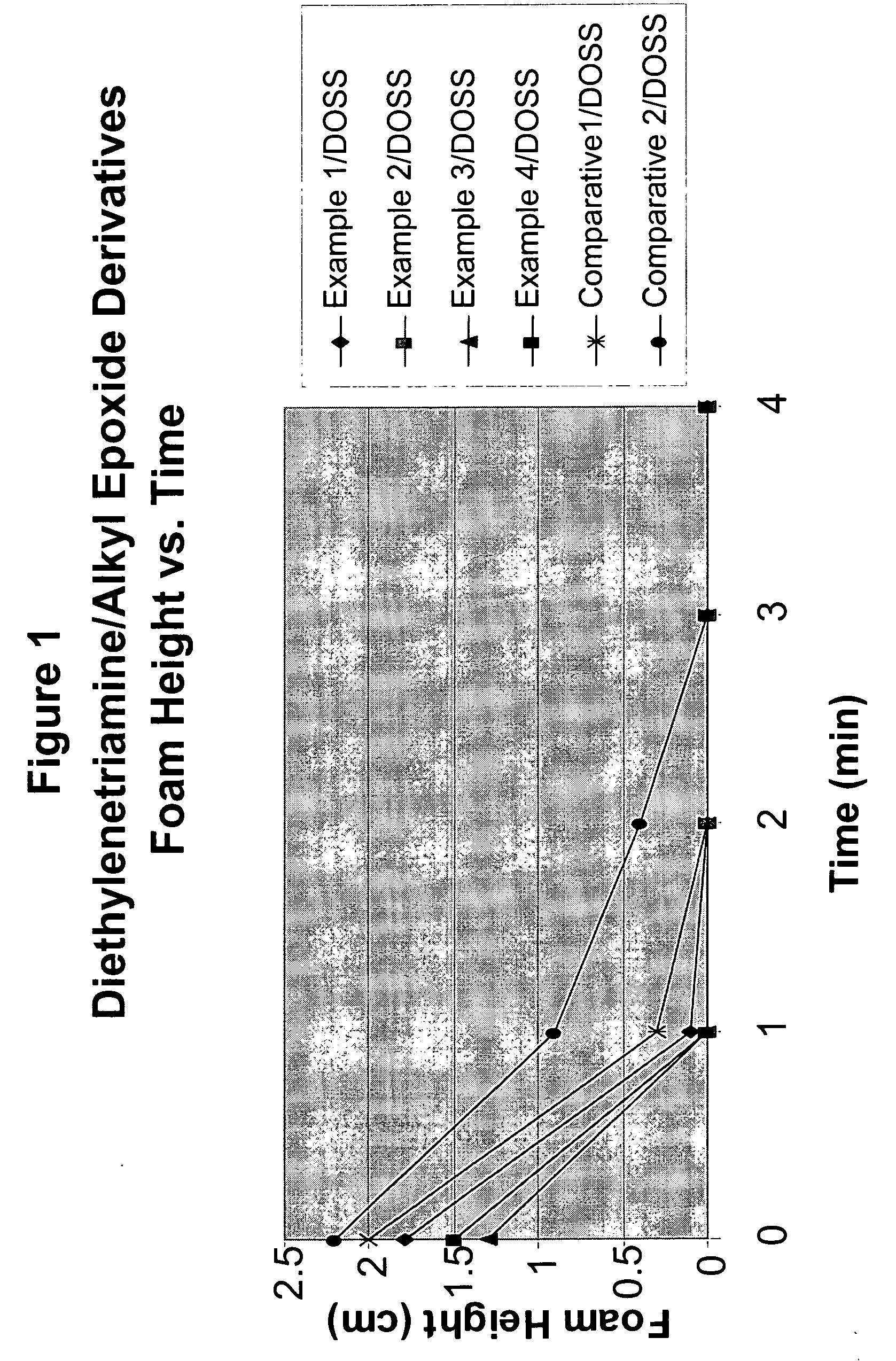Alkoxylated polyamines and polyetheramine polyol compositions for foam control
a technology of polyetheramine and composition, applied in the field of antifoam composition, can solve the problems of reducing the likelihood of surface defects, reducing the likelihood of silicon-based compounds and dispersions contributing to surface defects, and preventing the generation and stabilization of foam
- Summary
- Abstract
- Description
- Claims
- Application Information
AI Technical Summary
Benefits of technology
Problems solved by technology
Method used
Image
Examples
example 1
[0036]20.0 g (0.194) mol of diethylenetriamine was charged to a 100 mL three-neck round-bottomed flask equipped with a thermocouple, nitrogen inlet, magnetic stirring bar and an addition funnel and heated. When the temperature reached 120° C., 38.8 g (0.39 mol) of 1-epoxyhexane was slowly added over a period of 30 minutes during which time the temperature of the reaction mixture rose to 160-170° C. The reaction temperature was then maintained at 160° C. until GC analysis showed no epoxyhexane remaining. The reaction product was cooled to 30° C. and isolated as a light yellow viscous liquid. The reaction product was used without further purification.
example 2
[0037]20.0 g (0.194 mol) of diethylenetriamine was charged to a 100 mL three-neck round-bottomed flask equipped with a thermocouple, nitrogen inlet, magnetic stirring bar and an addition funnel and heated. When the temperature reached 120° C., 50.0 g (0.39 mol) of 1-epoxyoctane was slowly added over a period of 30 minutes during which time the temperature of the reaction mixture rose to 160-170° C. The reaction temperature was then maintained at 160° C. until GC analysis showed no 1-epoxyoctane remaining. The reaction product was cooled to 30° C. and isolated as a light yellow viscous liquid. The reaction product was used without further purification.
example 3
[0038]20.0 g (0.194 mol) of diethylenetriamine was charged to a 100 mL three-neck round-bottomed flask equipped with a thermocouple, nitrogen inlet, magnetic stirring bar and an addition funnel and heated. When the temperature reached 120° C., 60.6 g (0.39 mol) of 1-epoxydecane was slowly added over a period of 30 minutes during which time the temperature of the reaction mixture rose to 160-170° C. The reaction temperature was then maintained at 160° C. until GC analysis showed no 1-epoxydecane remaining. The reaction product was cooled to 60° C., filtered to remove some insoluble material, and isolated as a light yellow viscous liquid. The reaction product was used without further purification.
PUM
| Property | Measurement | Unit |
|---|---|---|
| Surface tension | aaaaa | aaaaa |
| Wetting tension | aaaaa | aaaaa |
Abstract
Description
Claims
Application Information
 Login to View More
Login to View More - R&D
- Intellectual Property
- Life Sciences
- Materials
- Tech Scout
- Unparalleled Data Quality
- Higher Quality Content
- 60% Fewer Hallucinations
Browse by: Latest US Patents, China's latest patents, Technical Efficacy Thesaurus, Application Domain, Technology Topic, Popular Technical Reports.
© 2025 PatSnap. All rights reserved.Legal|Privacy policy|Modern Slavery Act Transparency Statement|Sitemap|About US| Contact US: help@patsnap.com



